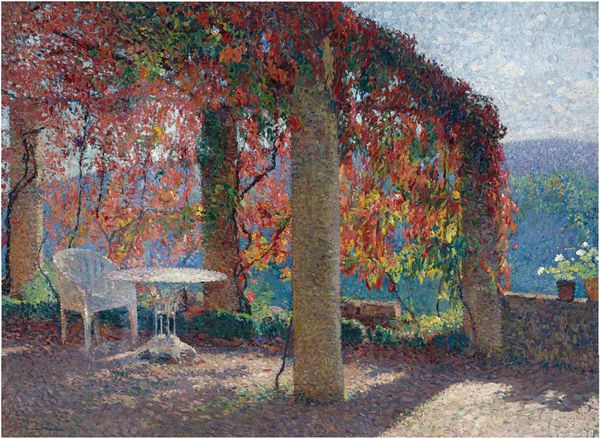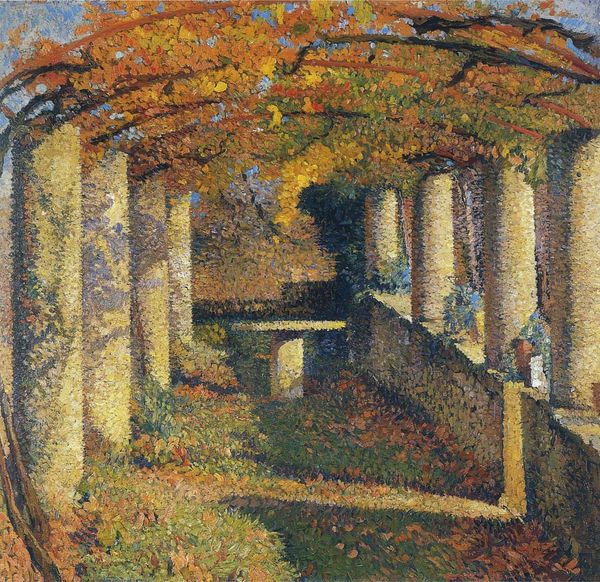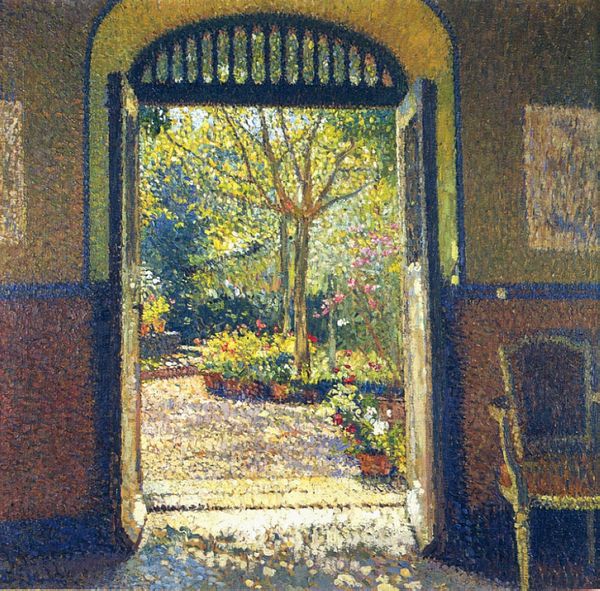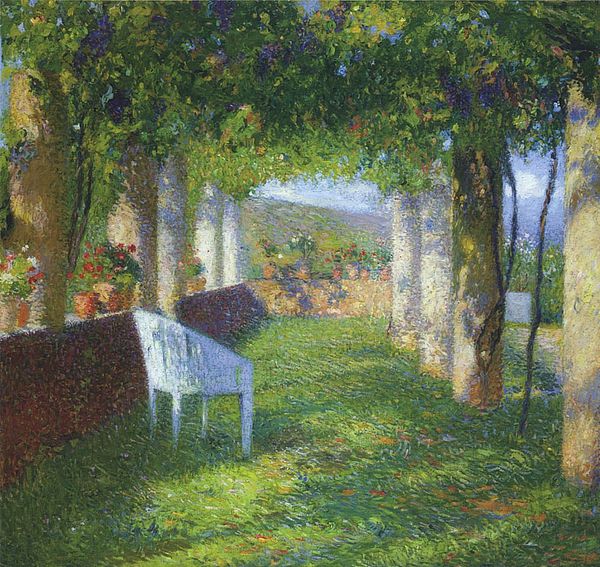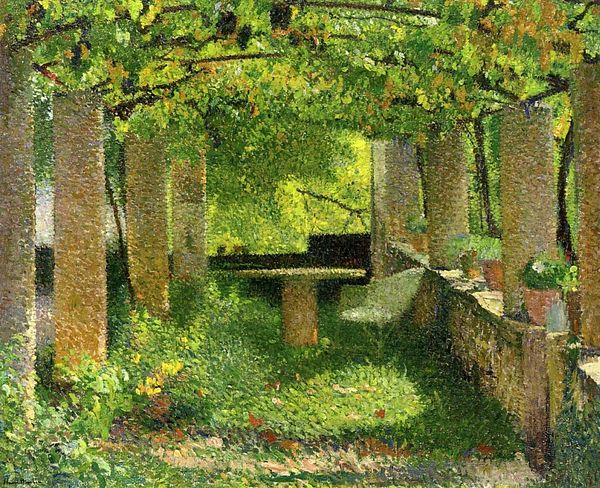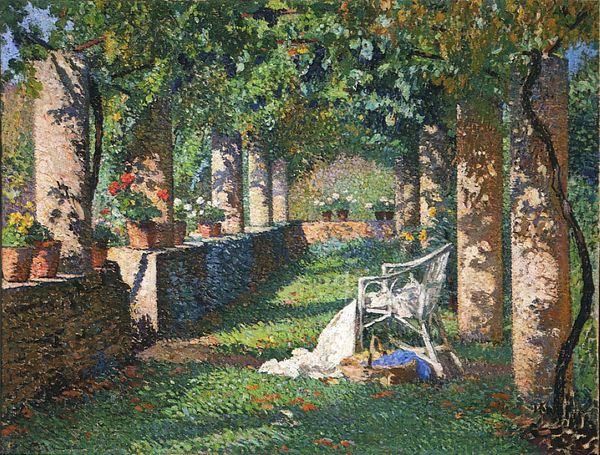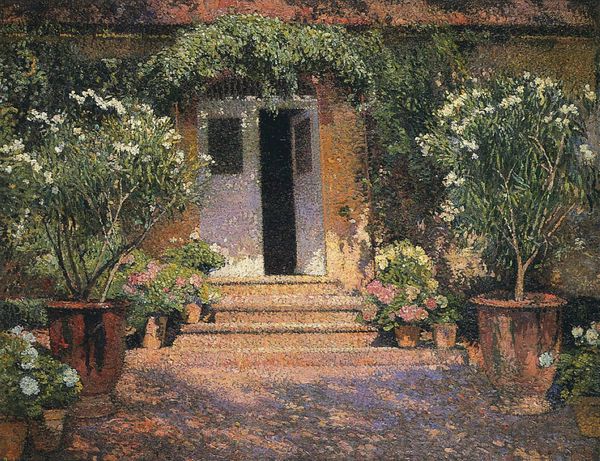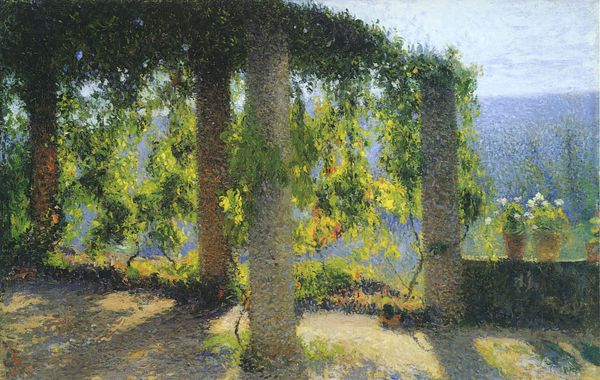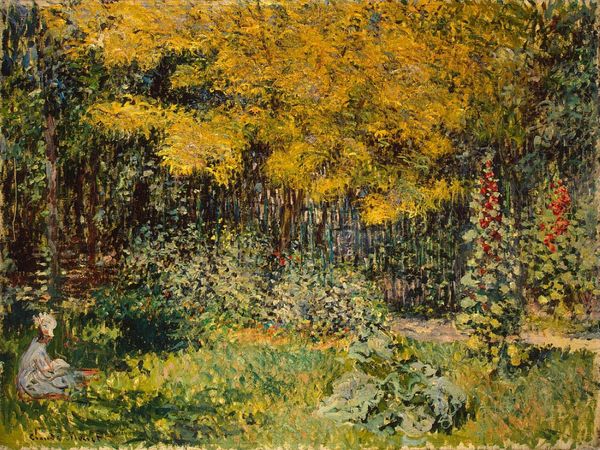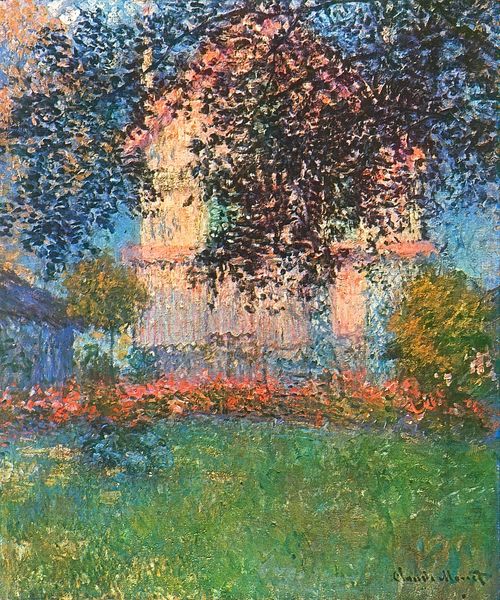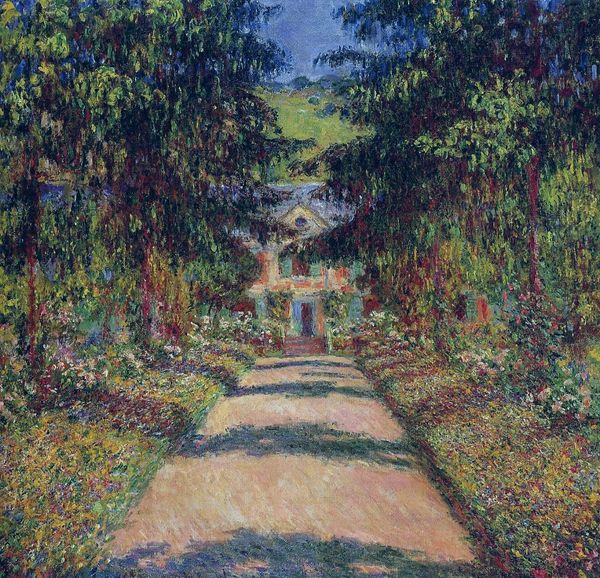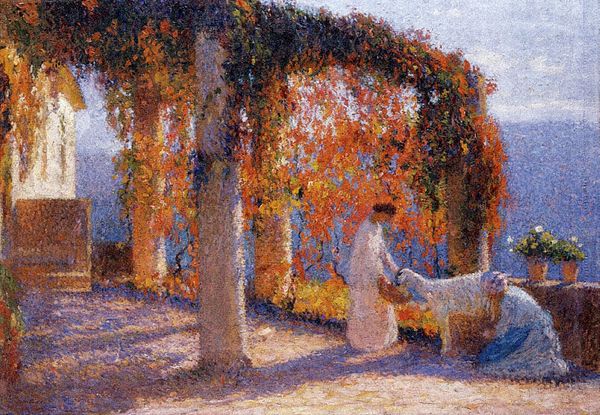
Copyright: Public domain
Curator: Editor: Looking at Henri Martin's "Garden Door in Bower," created around 1920 using oil paints, I'm struck by how the thick application of paint seems to blur the lines between the garden and the gate, creating this shimmering effect. What stands out to you the most about this work? Curator: What fascinates me is how Martin utilizes the materials themselves to depict a space. Consider the physicality of paint. He's not just representing light, but building it, layering pigment to give the garden this almost tangible quality. The labor involved is clear, the way he works the oil paints reminds you that painting itself is work. Editor: That makes a lot of sense. The dots of paint do seem to accumulate almost like manual labor on the canvas. Do you see a particular reason he opted for that technique? Curator: Absolutely. Look at the social context of post-impressionism. Artists were questioning academic painting and embracing individual expression, experimenting with materials, and pushing against traditional notions of representation. Also, what kind of garden do you think this is and who benefits from this leisurely landscape? Editor: It looks like a backyard in some country house. Curator: Exactly. And the people who commissioned these idyllic scenes often benefited from exploited labor of various kinds to sustain a privileged lifestyle, so there's this interesting paradox when you consider what the painting celebrates versus what it might indirectly conceal about the world. Editor: So, in this case, even a seemingly innocent landscape implicates economic disparity and labor practices? Curator: Precisely. Martin's technique emphasizes the production of the image. This pushes us to acknowledge not just the aesthetic pleasure, but the hands and social structures involved in bringing the artwork into existence. What's your impression now? Editor: I’ll certainly be looking at impressionist works differently now, considering the process of production. Curator: And recognizing art isn’t made in a vacuum, it’s always intertwined with its historical moment and material reality.
Comments
No comments
Be the first to comment and join the conversation on the ultimate creative platform.
